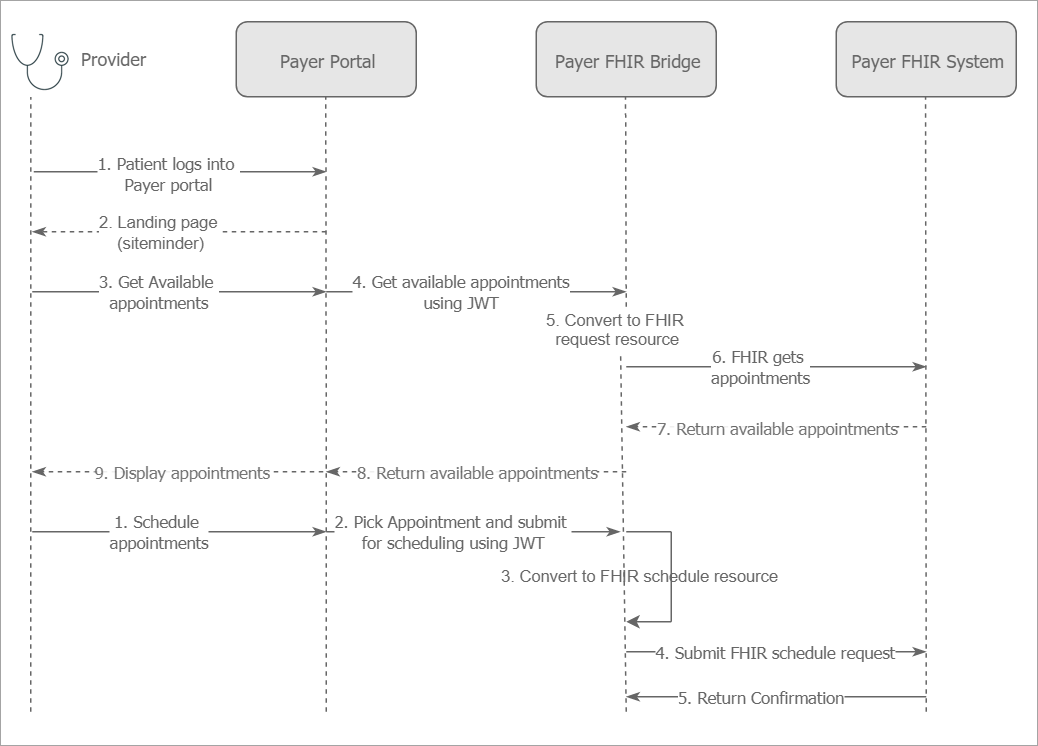|
|||
Da Vinci 1 Scheduling Generic ProfileThe profile walks you through a scenario where a patient schedules an appointment with a Provider by using the Member’s Portal of a Payer:
The profile contains the following routes: Practitioners RouteBy using the Member’s Portal of the Payer, the patient selects a Provider and sets up an appointment This route receives a request (in this scenario, from the Member’s Portal of the Payer) to return a list of available practitioners. The route returns the ID of the Provider selected by the patient. Patients RouteThe patient requests the practitioner's time slots to schedule an appointment. The route receives a GER request with the practitioner's ID as a query parameter and returns a list of available slots. Each slot has its own ID. Slots RouteThe patient requests the practitioner's time slots to schedule an appointment. The route receives a GER request with the practitioner's ID as a query parameter and returns a list of available practitioner's slots. Each slot has its own ID. Appointments RouteThe route has two workflows - for POST (appointment creation) and GET (appointment retrieval) requests: Flow 1 (HTTP POST) The patient selects a suitable time slot and submits a request to schedule an appointment with the Provider.
Flow 2 (HTTP GET) The patient verifies that the appointment has been created successfully by passing the patient ID and the appointment date to the Payer.
Get Practitioner ID RouteIn this scenario, to schedule an appointment, the route requires the practitioner ID along with slot ID and patient ID. This route retrieves the practitioner ID from the FHIR server. |




